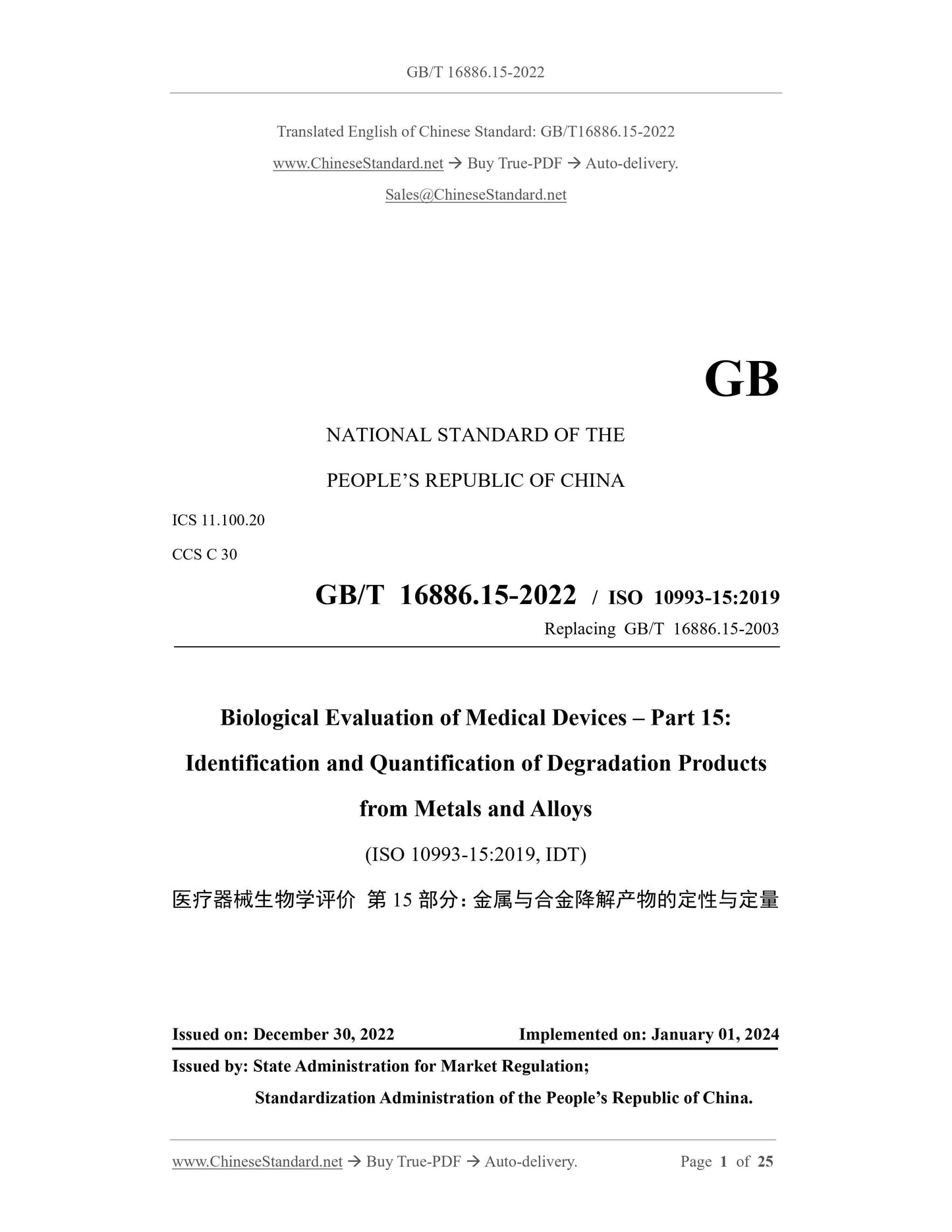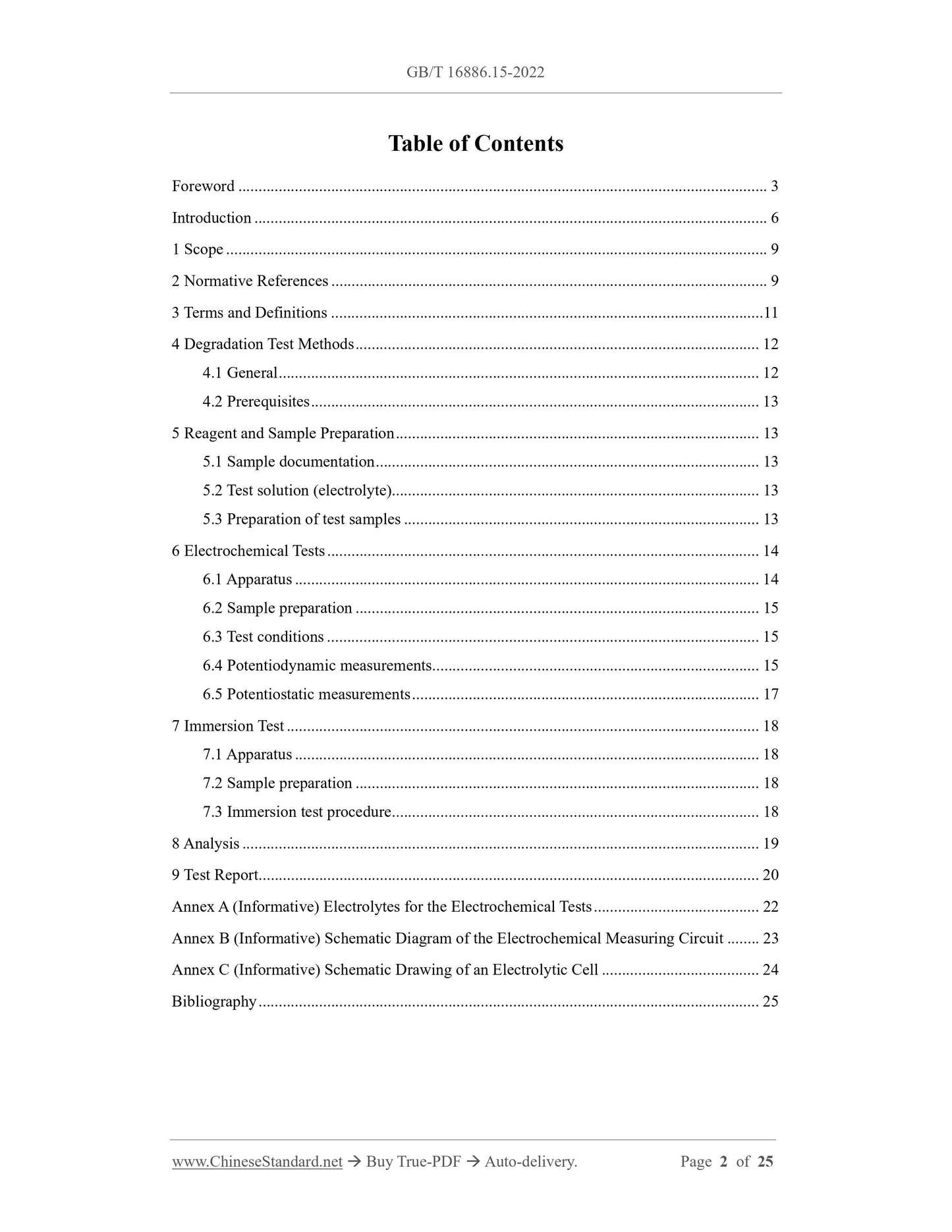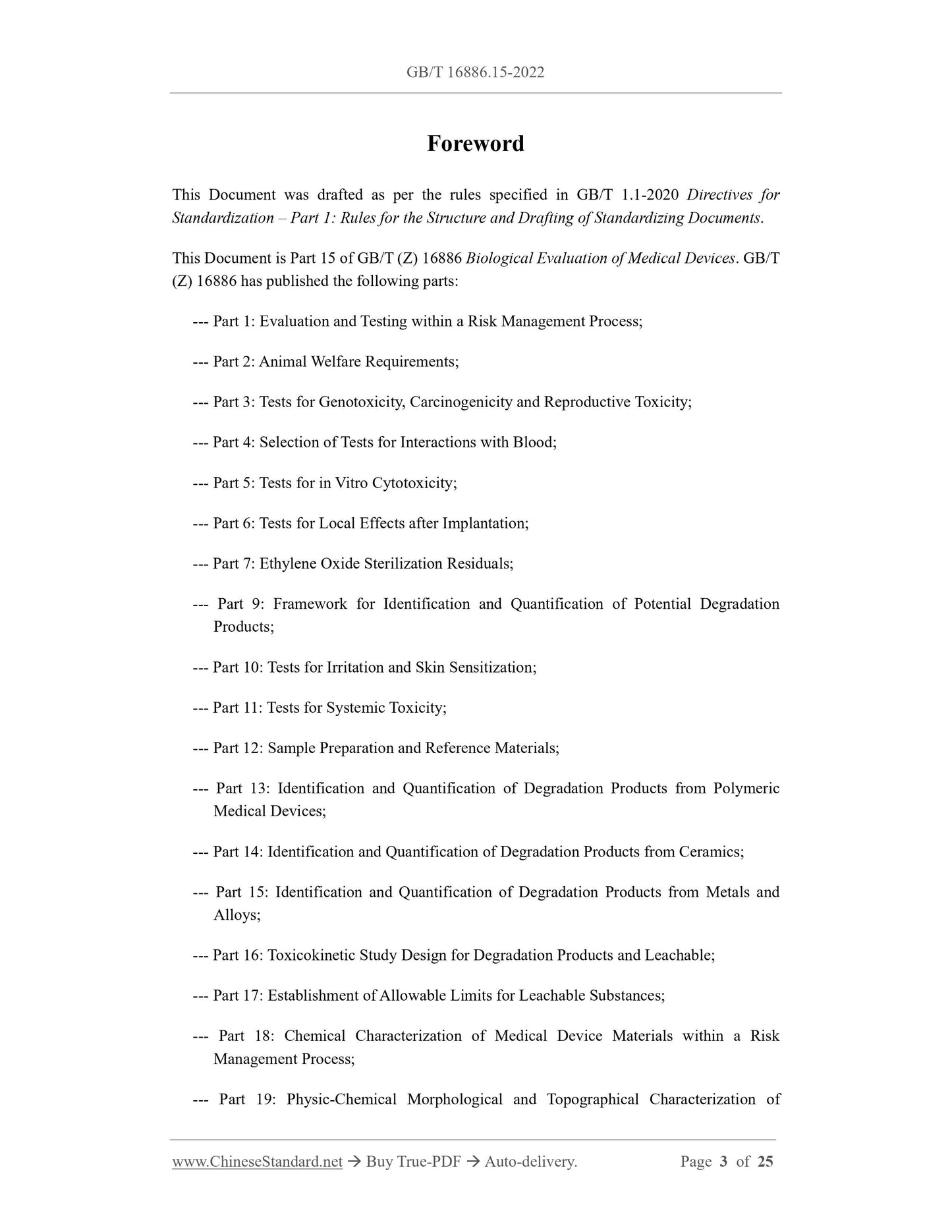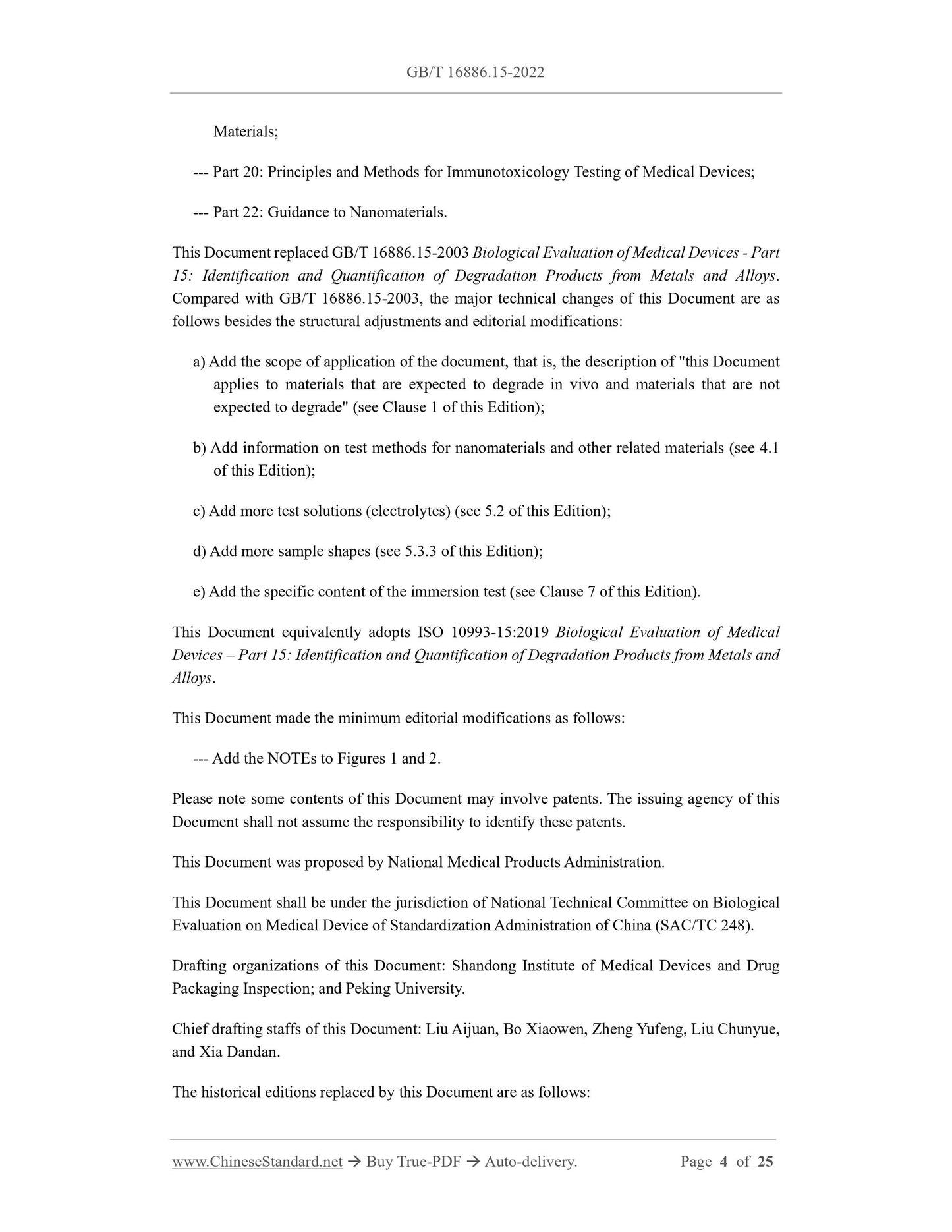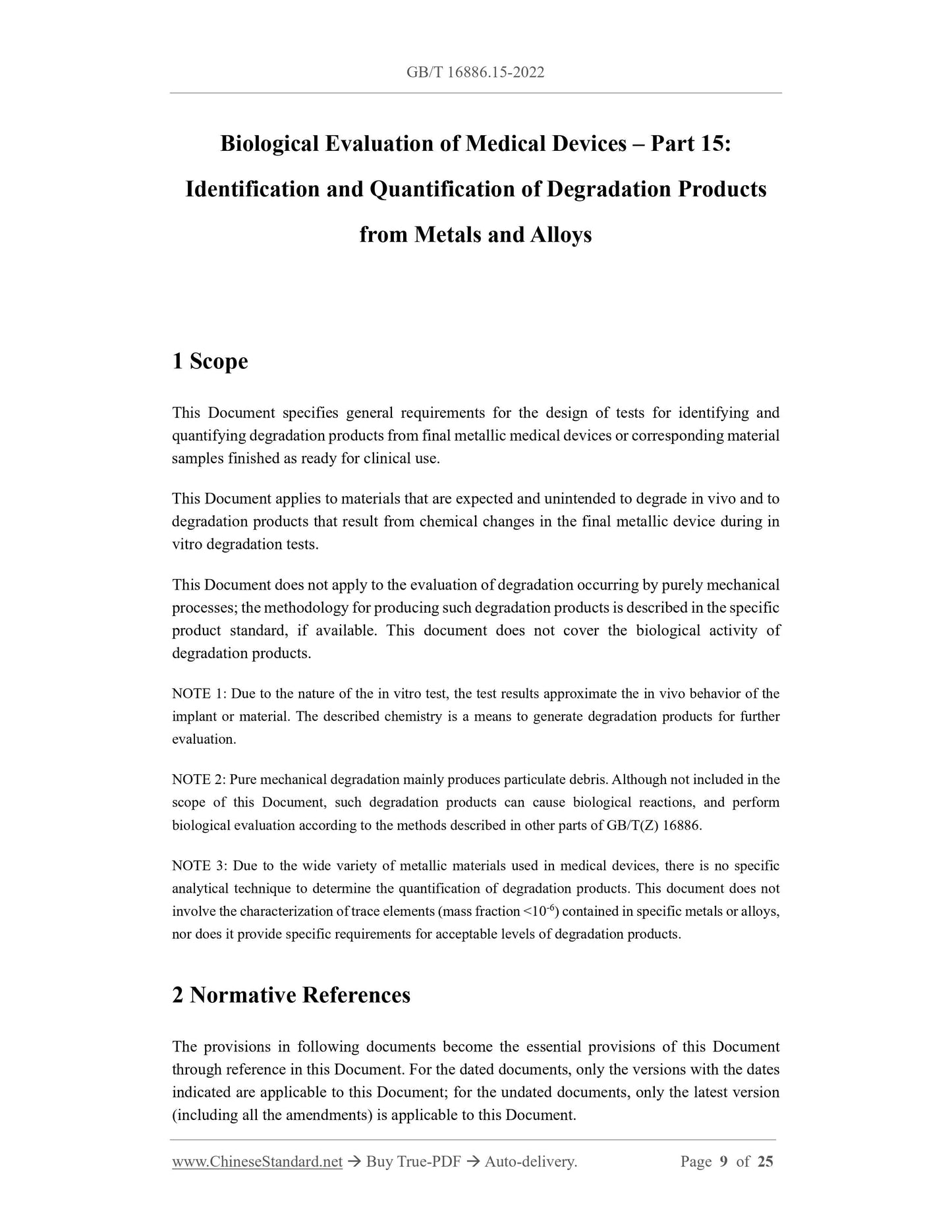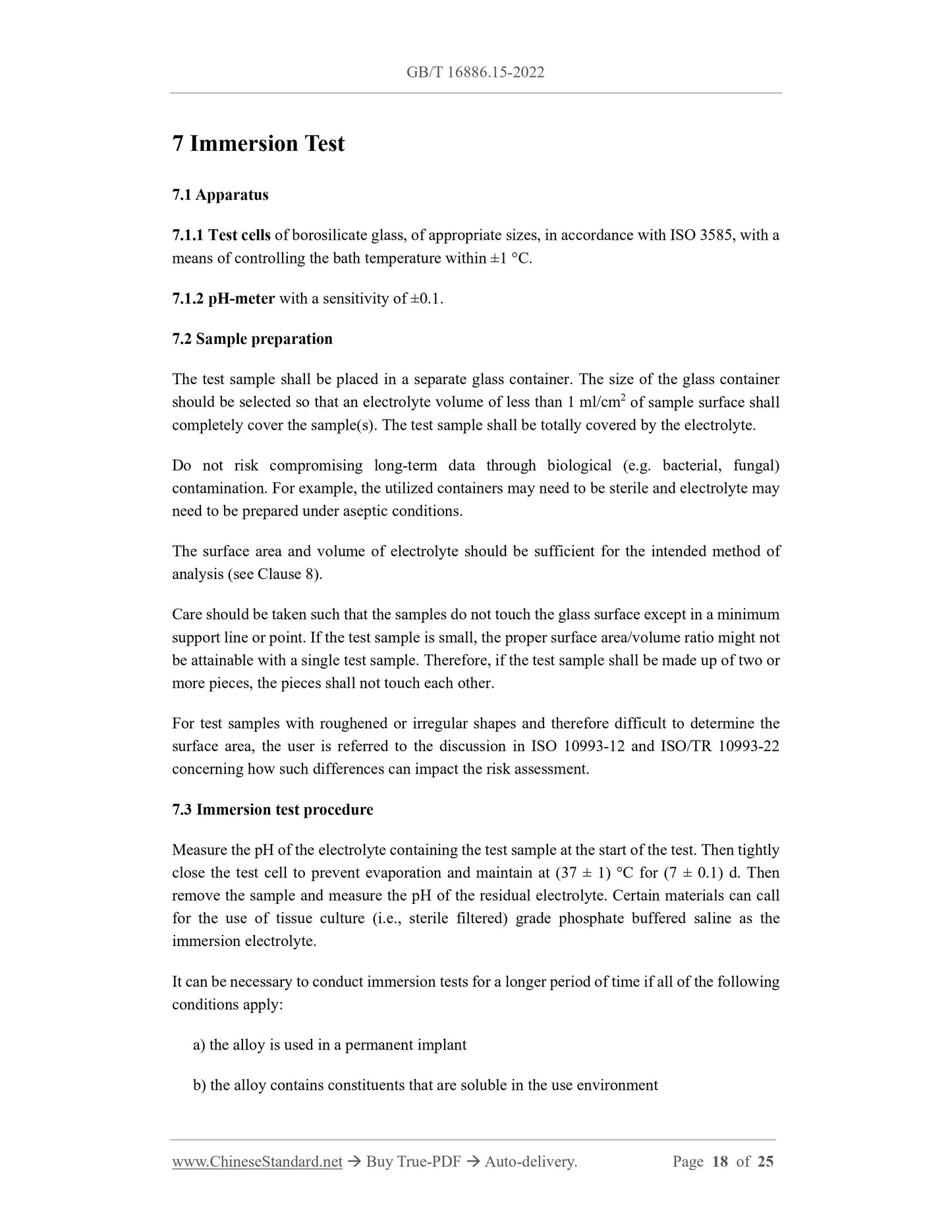1
/
of
6
www.ChineseStandard.us -- Field Test Asia Pte. Ltd.
GB/T 16886.15-2022 English PDF (GB/T16886.15-2022)
GB/T 16886.15-2022 English PDF (GB/T16886.15-2022)
Regular price
$260.00
Regular price
Sale price
$260.00
Unit price
/
per
Shipping calculated at checkout.
Couldn't load pickup availability
GB/T 16886.15-2022: Biological evaluation of medical devices - Part 15: Identification and quantification of degradation products from metals and alloys
Delivery: 9 seconds. Download (and Email) true-PDF + Invoice.Get Quotation: Click GB/T 16886.15-2022 (Self-service in 1-minute)
Newer / historical versions: GB/T 16886.15-2022
Preview True-PDF
Scope
This Document specifies general requirements for the design of tests for identifying andquantifying degradation products from final metallic medical devices or corresponding material
samples finished as ready for clinical use.
This Document applies to materials that are expected and unintended to degrade in vivo and to
degradation products that result from chemical changes in the final metallic device during in
vitro degradation tests.
This Document does not apply to the evaluation of degradation occurring by purely mechanical
processes; the methodology for producing such degradation products is described in the specific
product standard, if available. This document does not cover the biological activity of
degradation products.
NOTE 1: Due to the nature of the in vitro test, the test results approximate the in vivo behavior of the
implant or material. The described chemistry is a means to generate degradation products for further
evaluation.
NOTE 2: Pure mechanical degradation mainly produces particulate debris. Although not included in the
scope of this Document, such degradation products can cause biological reactions, and perform
biological evaluation according to the methods described in other parts of GB/T(Z) 16886.
NOTE 3: Due to the wide variety of metallic materials used in medical devices, there is no specific
analytical technique to determine the quantification of degradation products. This document does not
involve the characterization of trace elements (mass fraction < 10-6) contained in specific metals or alloys,
nor does it provide specific requirements for acceptable levels of degradation products.
Basic Data
| Standard ID | GB/T 16886.15-2022 (GB/T16886.15-2022) |
| Description (Translated English) | Biological evaluation of medical devices - Part 15: Identification and quantification of degradation products from metals and alloys |
| Sector / Industry | National Standard (Recommended) |
| Classification of Chinese Standard | C30 |
| Classification of International Standard | 11.100.20 |
| Word Count Estimation | 20,225 |
| Date of Issue | 2022-12-30 |
| Date of Implementation | 2024-01-01 |
| Older Standard (superseded by this standard) | GB/T 16886.15-2003 |
| Issuing agency(ies) | State Administration for Market Regulation, China National Standardization Administration |
Share
